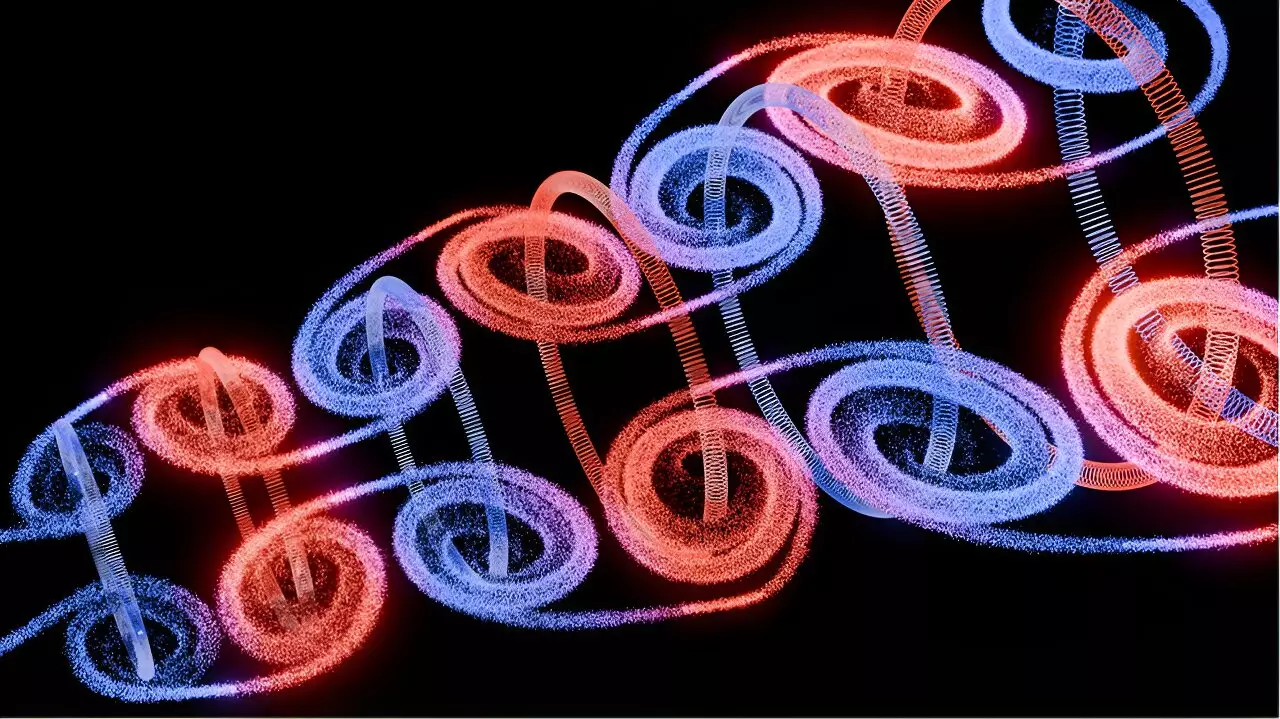A recent study published in Nature Communications by physicists from Singapore and the UK has shed light on an intriguing optical analog of the Kárman vortex street (KVS). This optical phenomena showcases the similarities between fluid transport and the energy flow of structured light. Unlike previous research on optical skyrmionic beams and pulses, the study introduces a new type of light pulse referred to as nondiffracting supertoroidal pulses (NDSTPs), which exhibit robust topological structures of skyrmions in condensed matter.
In the study, Yijie Shen from Nanyang Technological University explains that the structured light pulse shares similarities with the von Kárman vortex street, a pattern of swirling vortices observed in fluid dynamics. What sets NDSTPs apart is their ability to maintain their skyrmionic field configuration over arbitrary distances without being limited by diffraction, unlike traditional optical skyrmions. This unique property opens up new possibilities for applications in various fields such as light-matter interactions, super resolution microscopy, and metrology.
The researchers anticipate that the use of NDSTPs could lead to advancements in long-distance information transfer encoded in the topological features of the pulses. This could have significant implications for telecommunications, remote sensing, and LiDAR technology. Additionally, the deeply subwavelength singularities of these pulses may find applications in metrology and spectroscopy of toroidal excitations in matter, further expanding the potential practical uses of this optical phenomenon.
The Kárman vortex street, known for its aesthetic beauty and power, has a rich historical background that intersects science and humanities. The vortices were famously depicted in a painting at the Church of St Dominic in Bologne, Italy, inspiring Theodore von Kárman’s research on the subject. The destructive power of the KVS was demonstrated in the Tacoma Narrows Bridge incident in 1940, where improper design led to the bridge’s collapse due to vibrations induced by vortex streets.
The study on the optical Kárman vortex street pulse opens up new avenues for understanding the dynamics of light pulses and their applications in various fields. By exploring the similarities between fluid flows and light propagation, researchers have uncovered a novel optical phenomena that could revolutionize information transfer and metrology. The potential impact of NDSTPs on telecommunications and remote sensing highlights the importance of interdisciplinary research in pushing the boundaries of scientific knowledge and technological advancements.


Leave a Reply